The second year of a manager’s tenure is arguably more important than his first one. The first year usually goes by in adapting – players adapting to the new manager, the manager adapting to the new squad. By the time the second year comes around – and it comes around much sooner than expected – expectations increase and with that, considerations decrease. With ever-shortening managerial spans becoming the trend in the new game, it’s more than likely that if a manager is unable to get results or sell his project, he will be shown the door. Along with that, the second year of a new manager is more interesting than the first. Having had enough time to acclimatise himself, it’s then that his philosophy (or lack thereof) shines through. It’s a much better reflection of what kind of a manager a club hired and ultimately, whether he’s going to continue.
In today’s tactical analysis, we’ll take a look at Unai Emery ahead of his second season with Arsenal. Put on your seat belts, it’s going to be a bumpy ride.
Unai Emery replaced Arsène Wenger last season when the iconic manager stepped down from the mantle after twenty-two long years with Arsenal. Arsenal had just spent their first-ever season without Champions League football since 1998 and had otherwise been in a decline in the recent past. It was the year of change – on the field as well as behind the scenes – and no rational fan expected Emery to find immediate success with the club. Indeed, the objective was proposing a plan of action or a philosophy for the club’s immediate future. And, you know, get back into the Champions League, of course.
2018/19, by all accounts, was a lukewarm season for Emery and Arsenal. Although, they got to the finals of the Europa League and even had a 22 game unbeaten run in 2018, the sheer weight of the numerous underlying issues brought their short-lived optimism down to earth pretty quick. Arsenal started out well and trudged through the middle, but by the end of the season, the situation looked bleak. They had two chances to get back to Champions League – either win the Europa League or finish in the top four. They managed to do neither. Many would suggest they are back where they were a year ago. All of this means that the pressure is on Emery this season to deliver.
Emery’s tactics: the new Arsenal
There’s a lot that can be said about Emery. A very competent manager in his own right, the ex-Sevilla boss can, however, be a little inconsistent. He’s one of those managers who’s capable of producing a tactical masterclass on a given day and then completely losing the plot on a certain day.
Emery has his own philosophy on how the game must be played and it borrows a few ideas from the modern approach of positional play. His ideas are rooted in possession-based football with intense pressing off-the-ball. Tactically, he’s experimented with a few different formations – the 4-2-3-1, 3-4-1-2, and even the 4-4-2 variants but the different elements remain the same – wing-backs providing width, a double pivot and a very hard-working number 10. Off-the-ball, he likes to hold a high-line with his defenders stepping up to win the aerial balls and pressing. The press is initiated by the forwards (who try to move the ball out wide) with the midfielders zonally protecting the space and covering the passing lanes in the centre of the park.
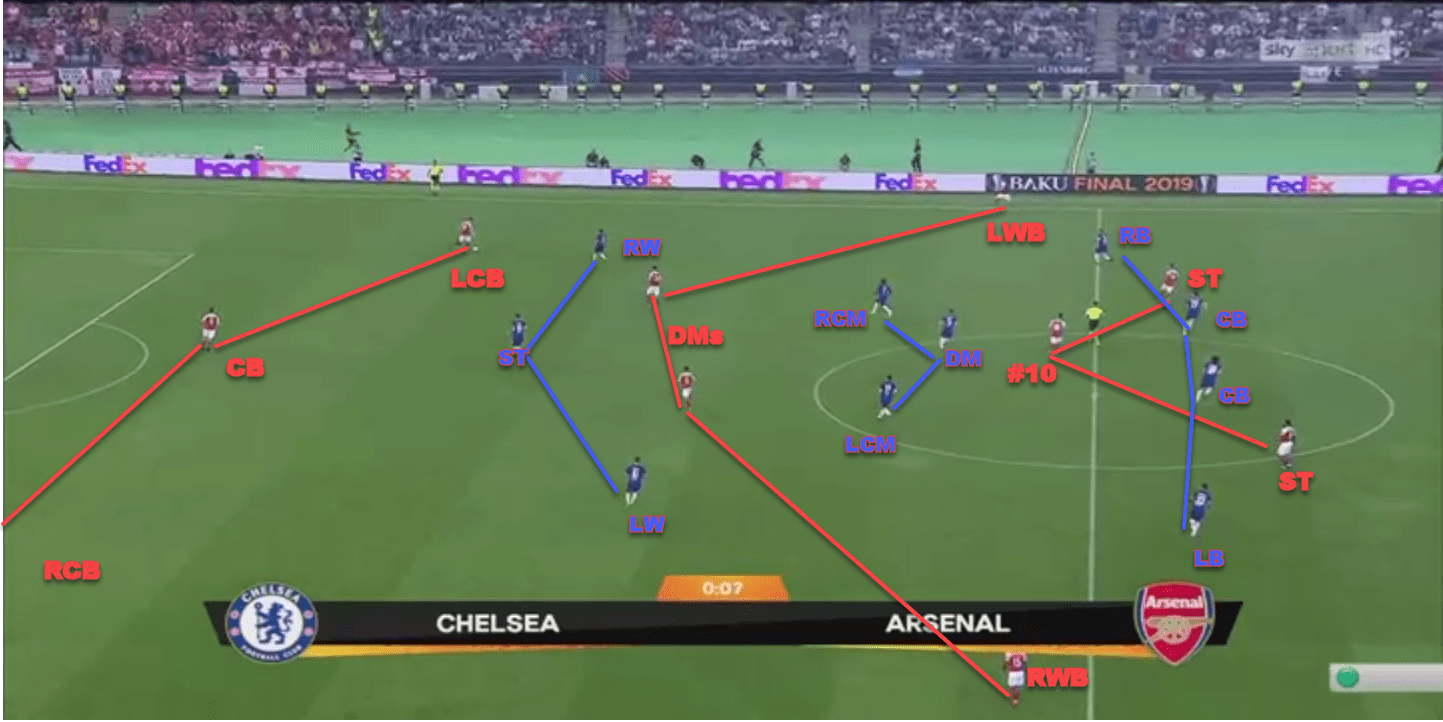
Emery has often spoken about the vision he has for Arsenal –
“I want us to be a chameleon team, able to play in possession, in static attack against close opponents, or to counter-attack.”
Wenger preferred a 4-2-3-1 as well and yet, despite the apparent similarities in formations, Arsenal’s offence is significantly different from Wenger’s.
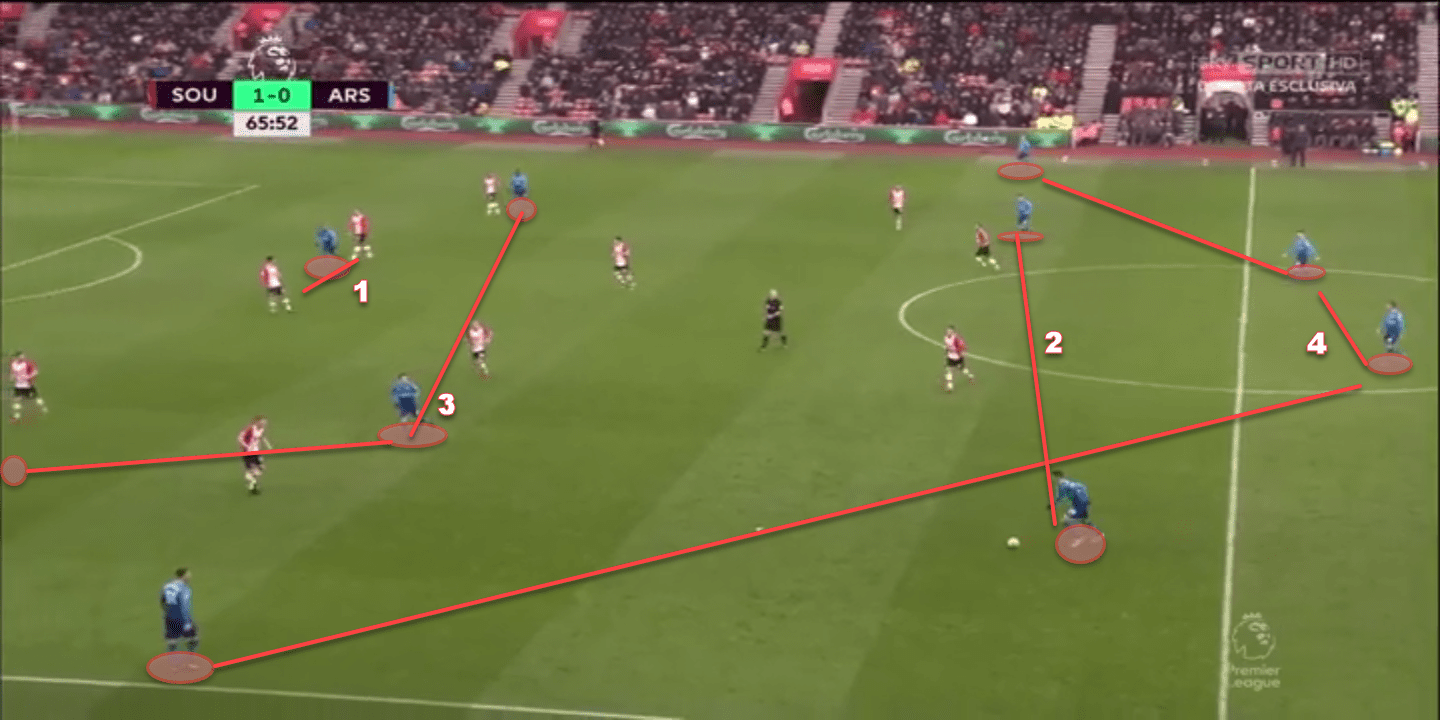
One of the biggest differences is how structured the attack is now. Compared to Wenger’s last season at the Emirates, Emery prefers a more organised approach in the final third. What this means is that the attacking players are no longer given the fluidity to move around as they please and combine wherever possible. One of the reasons behind this change is to make defensive transitions easier to manage. With 17/18 Arsenal, so many players out of position meant that it became easier for opposition teams to counter-attack.
This has already brought about some results. Arsenal in 2018/19 conceded fewer shots from counter-attacks as compared to 2017/18 – 3.4 as compared to 4.9.
Along with the above, Arsenal are a more direct side under Emery. Despite having similar possession stats in 2018/19 compared to 2017/18 (56.1 to 58.5 respectively), the number of passes attempted per 90 has fallen from 547.1 to 619.1. What this means is that Arsenal still keep the ball as much as before but play fewer passes and are not afraid to lose the ball in order to create chances. They no longer play fancy complicated sequences in the final third – instead opting for a more one-dimensional attacking build-up to create chances.
Wing-orientated mechanisms
Perhaps the greatest difference in style has been stylistic in nature. Arsenal under Wenger made heavy use of the central corridors and the half-spaces to enter the final third. They attempted a lot of give-and-go passes, in and around zone 14 with a lot of running off-the-ball to overload and ultimately break down defences. Under Emery, they prefer to use the wings to move into the final third and instead, the major source of chance-creation is cut-backs and crosses from the flanks. This has seen a shift from the central attacking midfielders being the playmakers to the wing-backs.
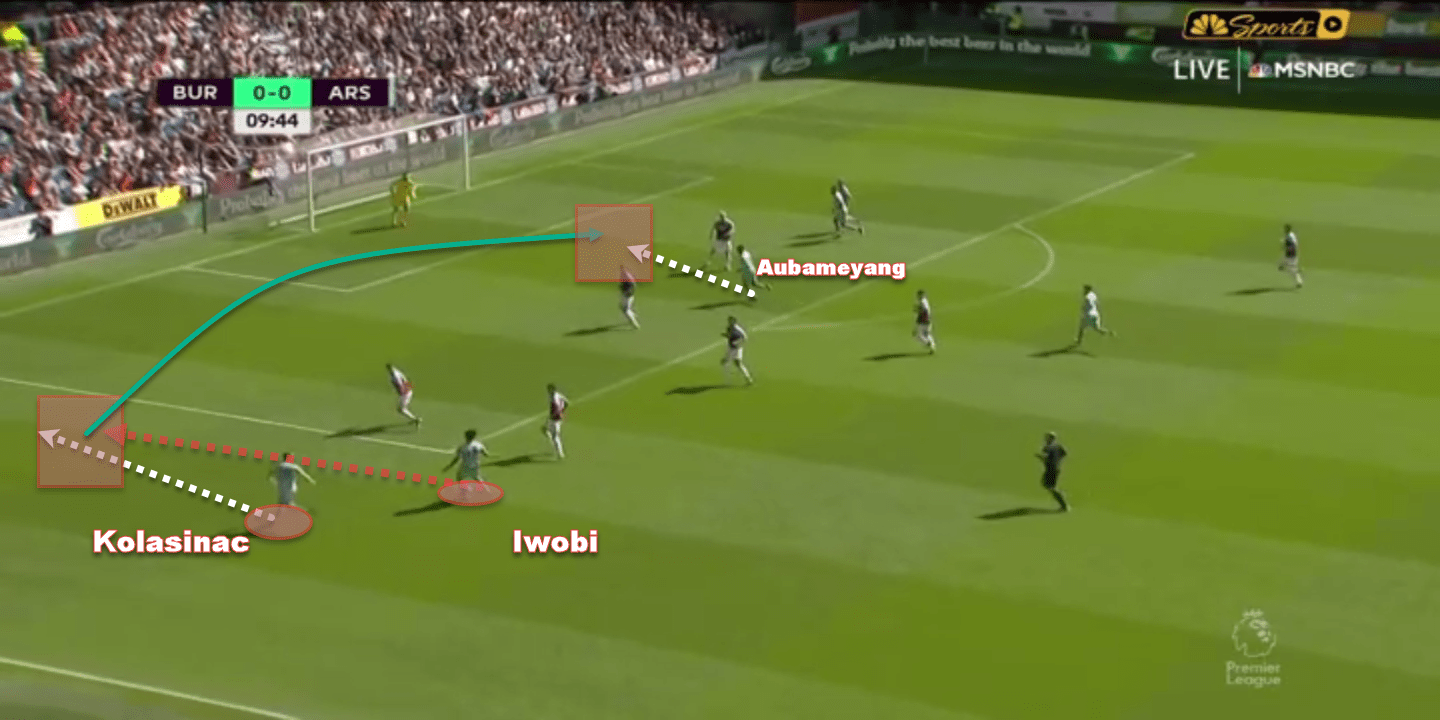
Clustering the passes using K-Means confirms the same for us. As can be seen from below, the most over-represented clusters are on the wings while 17/18-Arsenal had more passes in the central areas.


Objective for next season and issues to resolve
Now that we know how Emery plays and how that’s different from 2017/18 Arsenal, we should talk about what needs improving in our season preview. Before that, we should attempt to set up an objective – a standard by which we can measure success or failure.
Arsenal have been in the Europa League for two seasons now and are set to start their third season. The lack of Champions League football hurts the club in more ways than just on the field (revenue, recruitment, for instance). Getting back into Europe’s most glorious competition should be the very first objective. Furthermore, Arsenal fans would expect the team to not just stay get into the top four but look towards more silverware – domestic or otherwise. To expect the team to challenge Manchester City or Liverpool so soon would definitely be naïve, but a reasonable approach to do so at some point in the very recent future would also be the minimum of expectations. Quite simply, the fans would love to see the club having some direction and nothing speaks better than on-field performances.
The defence
We haven’t talked about the defence at all despite it safely being the biggest concern for Arsenal.
Last season, Arsenal were 10th in the league when it came to xG conceded per 90. They were also 10th in the league in terms of volume of shots faced per 90. This was a far cry from their 5th position on the table and suggests that the situation might have been even worse for them had their attack not been enough to bail them out on numerous occasions. We have analysed Arsenal’s defence in detail earlier in this analysis but in short, the problem is a combination of both tactical deficiencies and individual errors. The former can be worked on, the latter is difficult to improve upon.
Despite having worked on solidifying the defensive transitions, the sheer nature of the offensive duties of the fullbacks means that Arsenal keep getting caught out on the break. Even the best teams get caught out once in a while – it is here that a commanding presence in the backline helps out (we all remember Virgil van Dijk’s 1v2 vs Son and Sissoko). Unfortunately, Arsenal lack someone of that calibre in their existing squad.
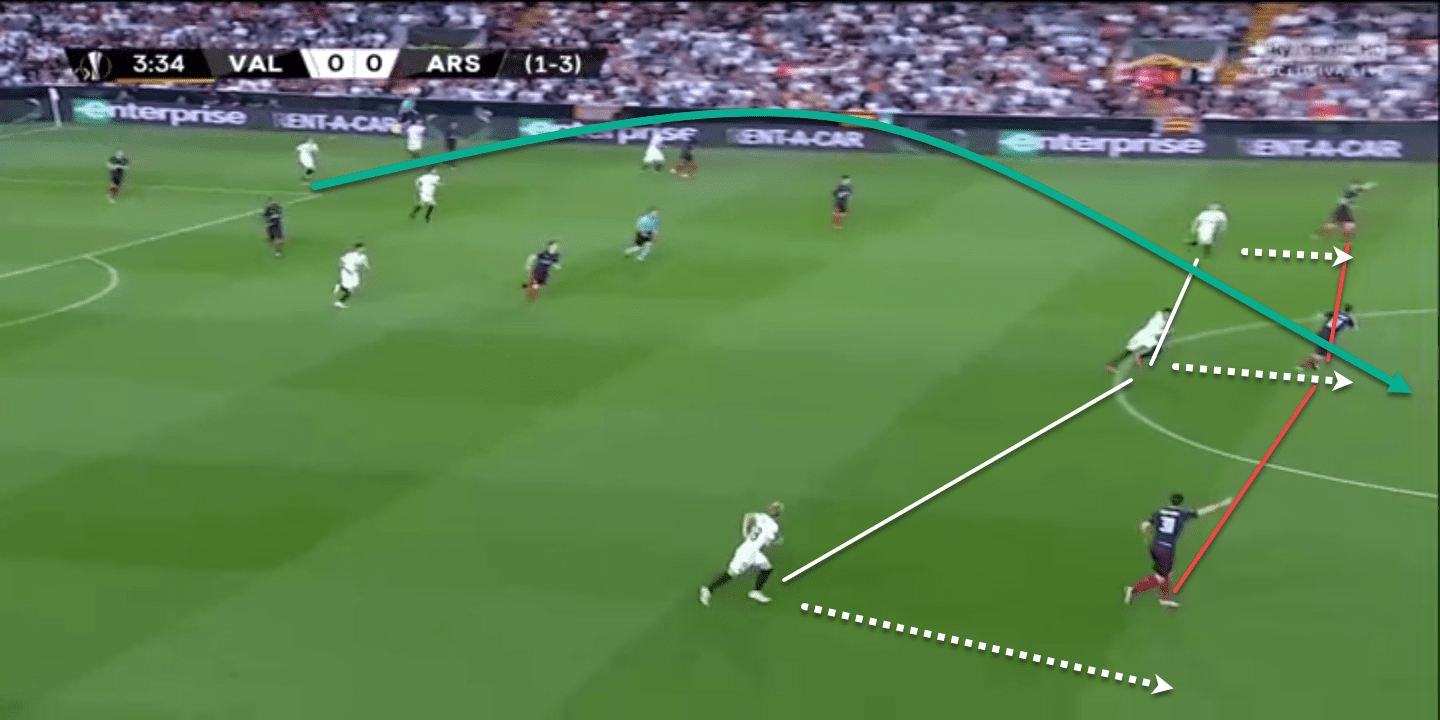
The other issue which troubles them is Emery’s tactical fallacies. In certain matches, Emery sets up his side in a manner which doesn’t allow for the right balance of dynamic pressing as well as protecting the space and ensuring the centre-backs don’t get isolated. The best example of this is the Europa League final between Chelsea and Arsenal; Arsenal’s 3-5-2 was ill-equipped to deal with Chelsea’s 4-3-3. Emery should’ve realised that after the first half but he failed to and ultimately that cost the Gunners the match as well as qualification for next season’s Champions League.
Arsenal are at their best when they defend in a high block with intense pressing but this is obviously difficult to carry out throughout the match. It also opens up the possibility of long balls over the top which combined with the lack of pace in Arsenal’s backline spells trouble for the Gunners. This is the reason Arsenal need at least one solid, pacy centre-back who’s dependable in 1v1 situations as well as set-pieces and rest defence. This leads us to the very next topic – transfers.
Transfer Activity
Arsenal’s transfer activity does not look good. Presently, they’ve only brought Gabriel Martinelli (who we’ve done a scout report on). As mentioned above, a new centre-back is the most pressing of needs for the Gunners. However, there have been no central defensive targets and that’s a worrying sign for Arsenal. The only player who’s been a target is William Saliba of Saint-Étienne but even if that deal reaches fruition, it’s most likely that he’ll stay on loan in France for the rest of this season.
On the other hand, there have been a lot of departures from the club. Petr Čech, Danny Welbeck, Stephan Lichsteiner have all left but the one loss that will affect the club the most in the next season is that of Aaron Ramsey. With him leaving for Juventus, the club have lost the only player who could play in an 8/10 hybrid role. His industry and unique attacking role will be difficult to replace. The club may have to look within and one very viable option is Emile Smith Rowe.
Note: Laurent Koscielny is also set to leave for France and that’s another loss which will hurt the club; Arsenal are already lacking in the central defence department
Youth and players returning
Arsenal haven’t looked particularly active in the transfer market until now. That doesn’t, however, mean that there won’t be a host of guaranteed fresh faces in the camp along with some old ones returning from loans and injuries.
The promoted players from the U-23 include Joe Willock, Eddie Nketiah, and Reiss Nelson. They’re all excellent attacking prospects. With Smith Rowe also returning from loan, and Bukayo Saka being impressive in his first pre-season match, Arsenal look fresh on the offensive end. In Reiss Nelson and Saka, they’ve got the kind of wide profiles that have been missing from the Gunners attack.
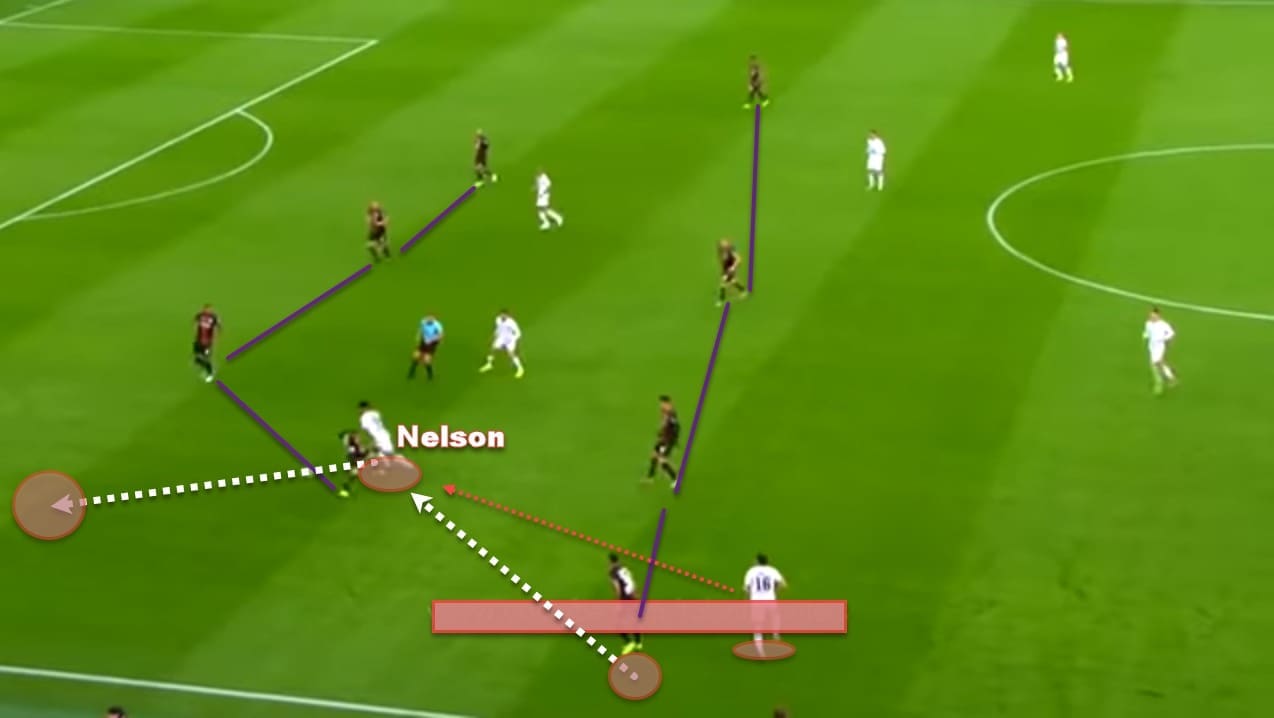
Although the lack of defensive signings is a worry, Arsenal find respite in the fact that Rob Holding is returning from injury, and Calum Chambers is returning from loan. Chambers was Fulham’s Player of the Season and can also play in midfield. Apart from that, Arsenal also have Krystian Bielik. The young centre-back was one of the talking points for Poland at the Under 21s European Championship. He looks like a promising modern centre-back/defensive midfielder and might get his break this season if Emery decides to include him in his plans.
Switching the point of attack?
As mentioned before, the wing-oriented attack is the hallmark of Arsenal under Emery. For example, compare Özil’s heat map from 18/19 to 17/18. As can be seen, he’s moved wider to help out his wing-backs. This means that he’s not getting into the coveted zone 14 – from where he’s able to inflict maximum damage on the opponent’s defensive block.

The lack of other attacking mechanisms means that Arsenal look lifeless against teams which sit in a low-block and defend their own box. One of the strengths of Wenger’s Arsenal was their unpredictability in attack. The pace of the offence, the quick combinations and the movement in between the lines made it difficult for teams to maintain defensive organisation. However, with Emery’s Arsenal, the lack of alternatives shows through when they face teams who are well-prepared to deal with the wide overloads and cutbacks.
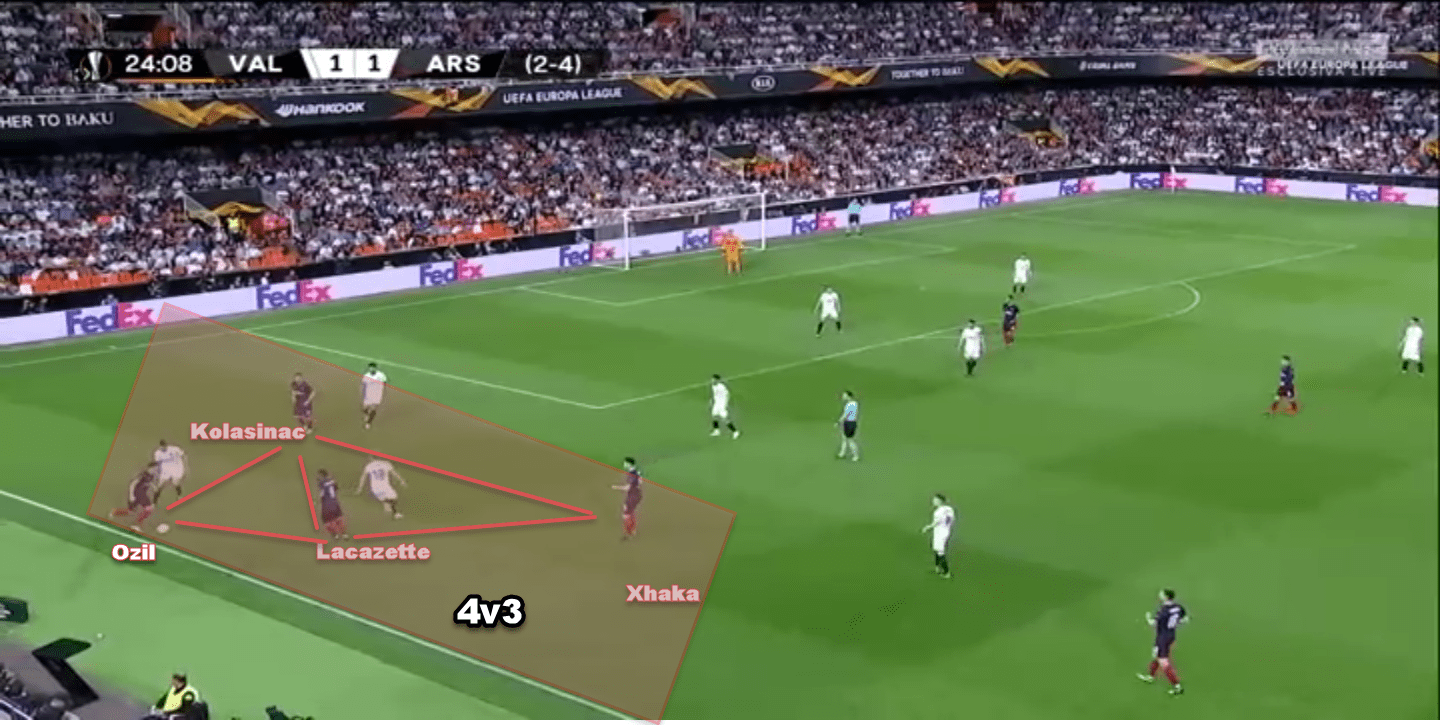
Hence, amongst the many challenges Emery’s facing, one of them is to also add more nuances to their attack. It’s possible that the addition of youngsters in the form of winger – Nelson and striker – Martinelli, might help the team find the right offensive balance.
Formation next season
Ideally, a lot of things should change for Arsenal next season. If the club succeed in bringing over Celtic left-back Kieran Tierney they might move back to Emery’s preferred 4-2-3-1. This will allow for the double pivot, two wingers in Nelson, Martinelli and Iwobi and a striker.
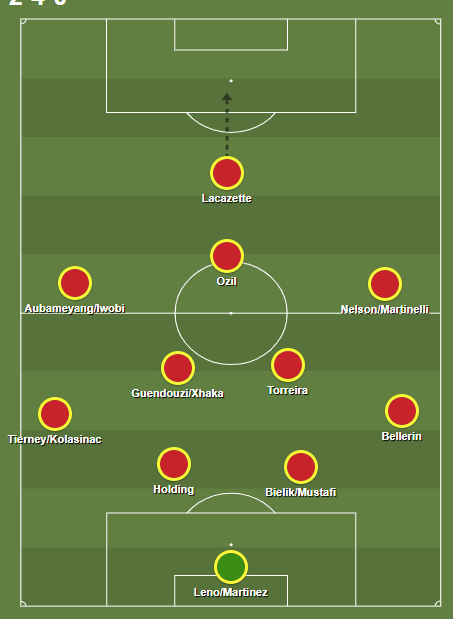
Arsenal must also improve their ball progression via the central spaces. An interesting, if unlikely, tactics would be to move Iwobi into midfield – a position he’s played well for his national side in the recent AFCON.
Conclusion
Arsenal are going through one of their most difficult phases in the Emirates era. Apart from the issues discussed above, a host of other issues pervade the club – the lack of leadership in the team, a strong transfer policy are a few of them. On-field, perhaps their most crippling issue is the away form – according to only away matches, Arsenal would’ve been 8th in the entire league. The poor performances on the road may partly be due to a mental block or a lack of confidence. That’s another issue the manager would have to address if they’re to challenge for the top spots in the Premier League.
It goes without saying that the next season will be very crucial for Arsenal – and for Emery. Second seasons usually are.
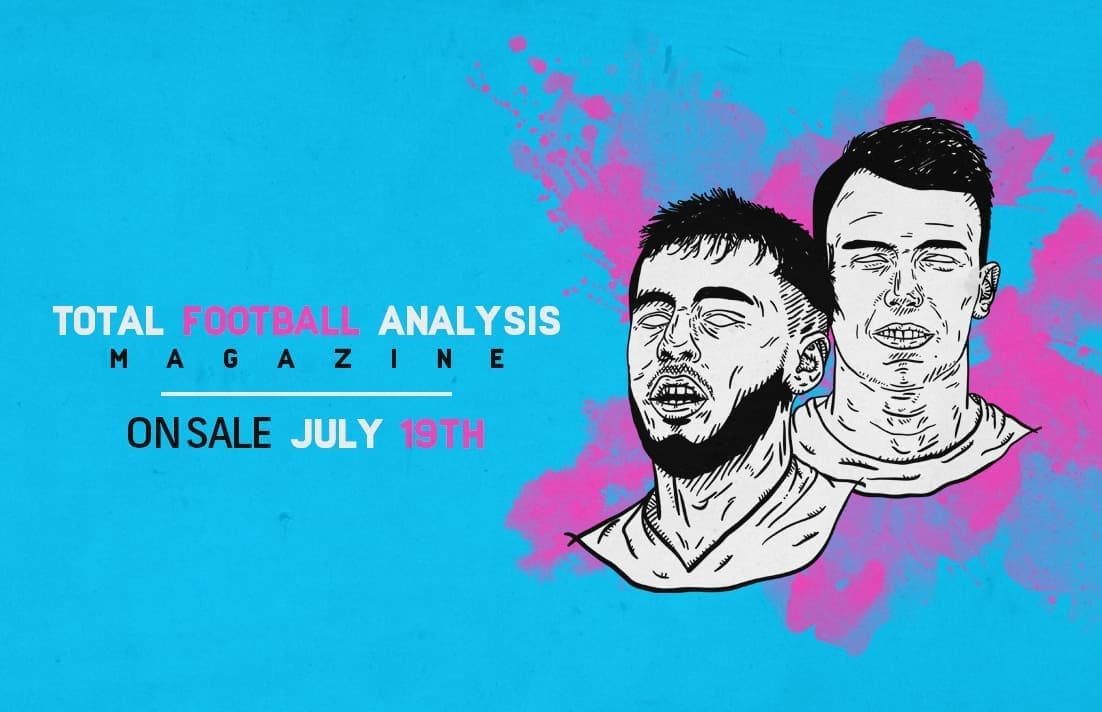
If you love tactical analysis, then you’ll love the digital magazines from totalfootballanalysis.com – a guaranteed 100+ pages of pure tactical analysis covering topics from the Premier League, Serie A, La Liga, Bundesliga and many, many more. Buy your copy of the July issue for just ₤4.99 here, or even better sign up for a ₤50 annual membership (12 monthly issues plus the annual review) right here.

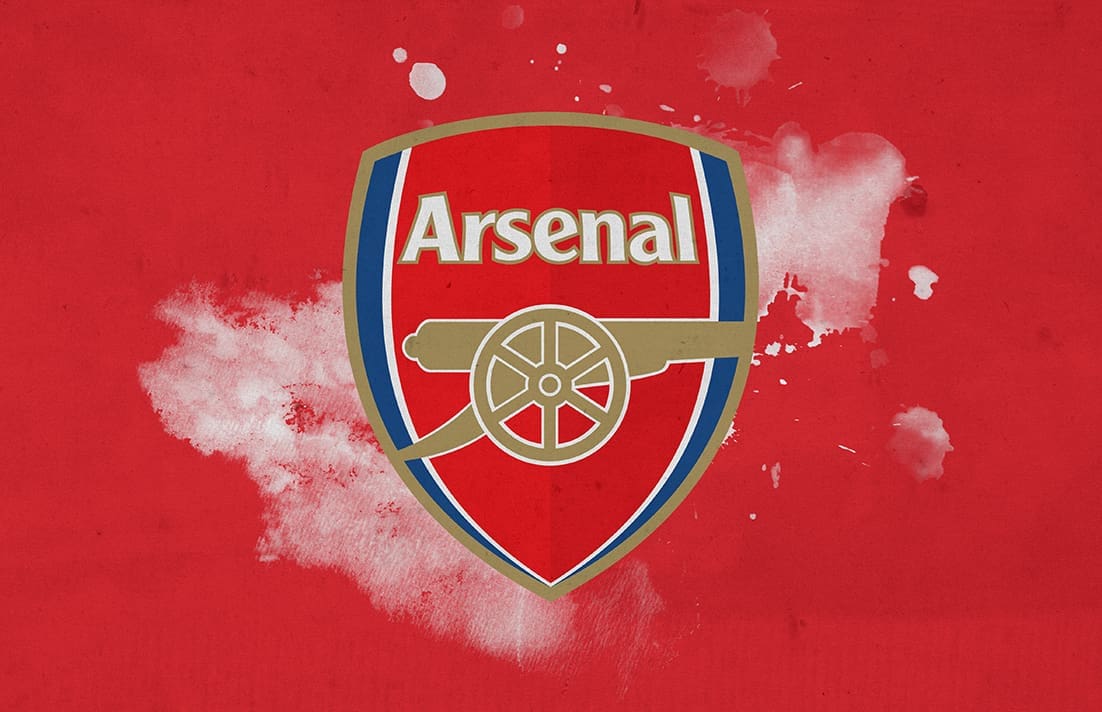




Comments